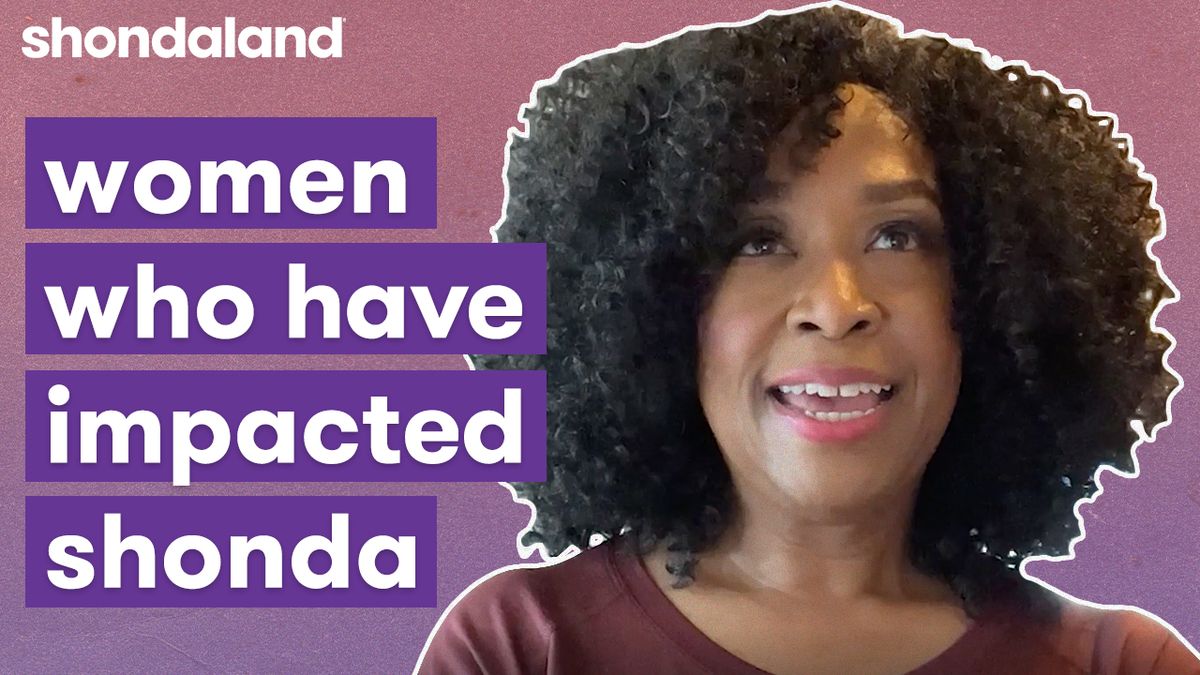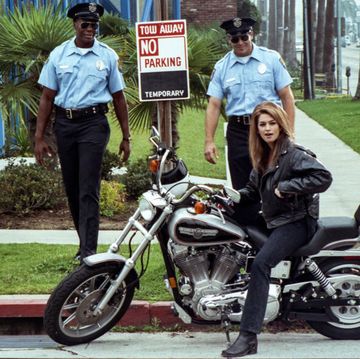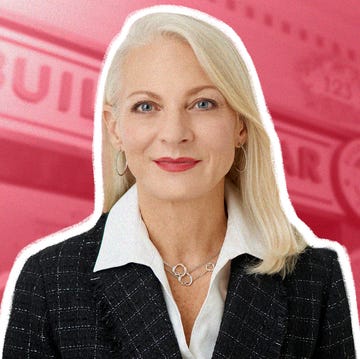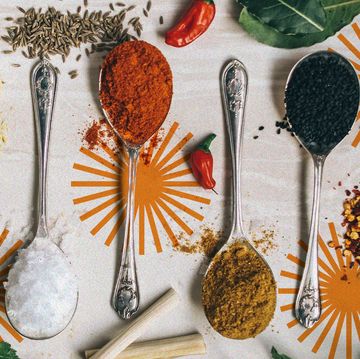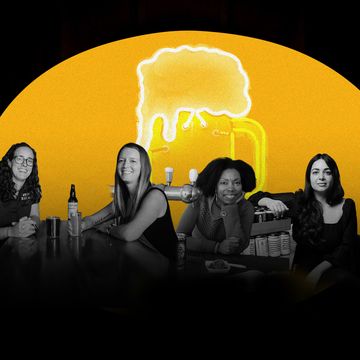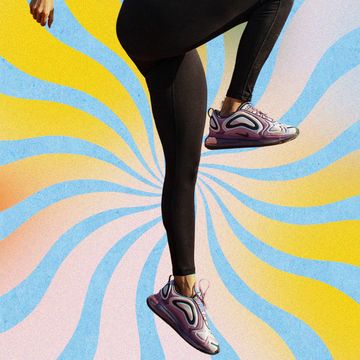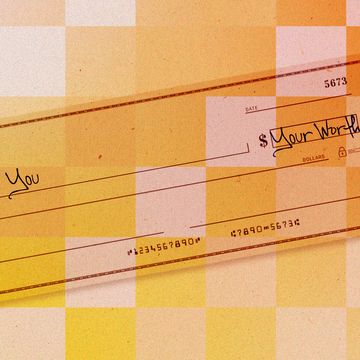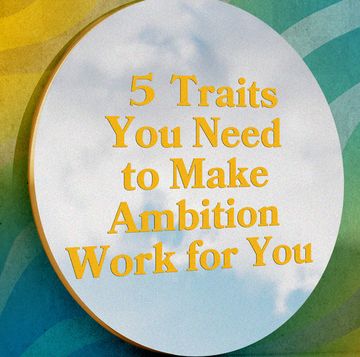In Shondaland’s Joy Makers series, we spotlight creative curators who operate behind the scenes to inspire moments of elation. Their handiwork illuminates pathways to delightfulness, and their one-of-a-kind insights help us find happiness in our own lives. In this month's installment, we explore the joy of music.
If you take a peek at your music-streaming platform of choice, there’s a good chance you’ll see featured playlists such as “Good Vibes,” “Feeling Happy,” and “Songs to Sing in the Car” plastered across the sleek home screen. These quirky collections, all created with mood in mind, don’t just appear. They’re made by someone, somewhere, sitting at their work desk. Someone like Akim Bryant.
“Music, in my opinion, supplies all of the emotions that humans have,” the New Jersey native says. “No matter what mood you’re in, you can find a song that caters to that mood.”
Bryant’s role as the associate director of music programming and head of R&B programming at Pandora orbits around keeping his finger on the pulse of new music. His days consist of updating release schedules and placing new songs in the appropriate destinations on the platform.
“There are a few different DSPs [digital service providers] out here at the top, but Pandora’s one of the original — if not the original — and led the groundwork for what a lot of the competition is now doing,” Bryant says. “To be a part of that legacy going forward, that was kind of a no-brainer for me.”
Bryant started at the audio streaming service in November 2018 after receiving a call from a friend about the role. Although he’d been working in the music industry for close to a decade, he was drawn to the opportunity to work in the genre that brought him the most joy: R&B.
“It’s the soul,” he says. “It touched me at a very early age, unlike any other type of music.” He points to tunes like Sade’s “The Sweetest Taboo” and singers like Anita Baker as inspirations. “I couldn’t really understand the messages, but I felt them. I could feel it in the singer’s voice and in the lyrics, especially.”
Bryant was exposed to music at an early age by way of his oldest brother, who was a DJ in the ’90s. “They would get all of the new singles on vinyl as soon as they came out,” he recalls, “so he had an enormous collection of vinyl that I used to dig through. I was super-careful — I was maybe 5, 6, 7 years old — but I knew how precious the collection was. I never wanted to scratch a record, and I pride myself in the fact that I never did.”
A love for tangible, silky vinyl transferred to a deep adoration for Quiet Storm radio. By college, Bryant and music were linked. He knew he wanted to work in the industry but wasn’t sure to what degree. When he attended a Billboard conference and saw a Music Choice programmer speak about his job, Bryant thought to himself, “That sounds like what I’ve done most of my life.” The same programmer he saw speak that day gave him his first internship in the business, and he hasn’t left music programming since.
Nearly three years into his job, he was asked to take on a new task last year: build a station that delivers listeners happiness in musical form. In 2020, the audio platform saw the search term “happy” rise 111 percent. “We have access to all of the search terms that people use on the platform,” Bryant says, adding that an overwhelming amount of search terms are emotions. “The conversation then turned into ‘How can we serve these people who are looking for this type of content?’”
At first, Bryant was stumped. “People don’t necessarily think of ‘happy’ when it comes to R&B music,” he says. Then, two other words came to mind: “Feel good.” Bryant was determined to share a more upbeat side of the genre while still connecting with its smooth, laid-back roots, so his team built the Feel Good R&B station from scratch.
“One of the things that I love about R&B music is that it’s always authentic,” he says. “The biggest songs are the ones that resonate the most with people and their experiences.” The genre’s nostalgic flavor, whether about life or love, has the powerful ability to transport listeners to a place or time and give meaning to a memory or feeling.
The genre known as rhythm and blues originated in the 1940s in the African American community and is inextricably linked to the pursuit of happiness amidst pain. Bryant nods to the songs of the second half of the 20th century that composed the genre, noting, “There’s a strong connection between music — how it sounds and how it feels — and oppression.”
The joy that exists within the genre isn’t rooted in the heartbreak that inspires the music, but in the personal and communal connection it grants to people who have endured similar experiences. It also acts as an escape from the harsh realities of the world. “It was hard living,” he says about R&B’s early artists, “but then they took that experience behind closed doors and said, ‘We’re going to have fun.’”
This sentimental notion that we can’t wait for delight to find us, but that we must create it for ourselves, extends into the music we hear today. “We can’t get rid of it, even with the new music,” he says. “You can’t substitute all of the energy, all of the love, all of the experience that went into those songs in the ’70s, ’80s, and ’90s.”
Sade’s “Nothing Can Come Between Us,” Janet Jackson’s “Love Will Never Do (Without You),” and Whitney Houston’s “I’m Every Woman” are a few of Bryant’s favorite tunes that grace the station. “One of my close friends is a huge Whitney fanatic, and whenever we hear this song, to this day, we can’t believe that someone had the balls to cover Chaka Khan and took it to the next level,” he says. “How did you take a Chaka Khan song away from Chaka? That’s crazy.”
Whether it’s a 2000s throwback like “My Boo” by Usher and Alicia Keys or a more contemporary hit like “Not Another Love Song” by Ella Mai, Bryant says that when a music lover hears these songs, they can’t help but smile and immediately feel laid-back. “R&B comes with the vibes,” he says. “We want to feel good without being extra.”
When building the Feel Good R&B station — or any other station, for that matter — Bryant starts with what he calls the core songs. “What songs are going to identify the station? What songs must you hear when you pull up the station?” After establishing this foundation, he says, that’s when the real fun begins.
The team starts pulling in songs that are lesser known, more funky and dynamic options. “We’re all music experts,” Bryant says, “so we’ll have these songs that immediately pop up when you’re thinking about a particular theme.” The station starts taking form as a melting pot of different sounds: a combination of the most popular and beloved songs that fit the mood as well as hidden gems that fit the mood.
The final task is to fill any glaring gaps in the station’s picks. As a former music journalist, Bryant prides himself on his research ability, as research is an act that brings him elation in itself. “I think it’s important to not just rely on your own knowledge because you might miss something,” he says. He spends a large chunk of time perusing “best of” lists and roundups, ensuring no happy song is left behind. The programmer then finishes off the process by sharing the playlist with his most trusted confidants, including his coordinator, and welcoming feedback.
“I allow people I trust to listen and get their feedback because if I just go off of my own opinion, I’ll love everything I do,” he says. “I want to hear the feedback from the people that I love and respect, see what they think, and then I’ll make adjustments.”
On the back end of the programming, data provides Bryant and his team with listener responses in the form of what’s being “thumbed up” or “thumbed down” and song completion and skip rates. “All of that stuff is taken into consideration when we’re looking to prune the station and give the people more of what they want and more of what they’re expecting.”
While studies have shown that major and minor seventh chords are linked to happier and brighter music, Bryant believes there is no real rhyme or reason when it comes to what makes a song a “feel-good song,” pointing to Aaliyah’s “It’s Whatever” and Jaheim and Keyshia Cole’s duet “I’ve Changed,” both featured on Feel Good R&B. “A similar chord is used in each of those songs. Automatically, when you first hear it, those first few chords [make] you feel happy because it’s a little bit higher pitched and [there’s] a bell type of sound.”
What personally makes programming this music joyful for Bryant is the collaboration that goes into the process. He’s been working at home since the onset of the pandemic, but it doesn’t change how much he and his team members bounce ideas off one another and come together to curate a musical experience bigger than themselves. “We need each other,” he says, “and help each other grow.”
Bryant stays in this business not for the money or access to music icons but for the love of how the powerful force of music makes him and others feel. “People don’t really consider how much impact music has on your emotions and how you feel,” he says. “Seek out the joy in the music, and be connected with the reason why you love listening to music in the first place.”
Akim Bryant’s Three Tips for Playlist Making
Music first, vocals second
“Most people don’t actually listen to lyrics immediately when they first hear new music. It usually takes a minute for them to understand exactly what’s being said in the song, so that is secondary.”
Seek out unfamiliar songs
“Do your research. No one person knows it all. Definitely dig into the crates and [explore] your options. You definitely [should] run it past a couple of people that you trust. Collaborate as much as you can on the concept without stealing people’s ideas.”
Create sonic diversity
“You don’t want to keep hearing the same artists over and over or music from the same album. You want to make sure there’s some sonic diversity happening, so you don’t want to have too many ballads or too many up-tempos.”
Mia Brabham is a staff writer at Shondaland. Follow her on Twitter at @hotmessmia.
Get Shondaland directly in your inbox: SUBSCRIBE TODAY

